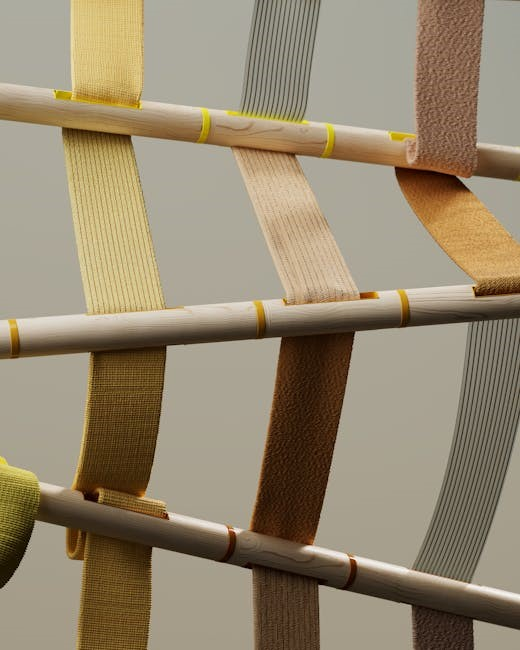A manual linear actuator is a device that produces linear motion through manual operation, typically using hand wheels or levers. Unlike electric, hydraulic, or pneumatic actuators, it doesn’t rely on external power sources. These actuators are often employed in applications where precision and control are paramount.
The basic operating principle involves converting rotary motion into linear motion through mechanical means. This is often achieved using a screw thread mechanism, where turning a handle or wheel causes a screw to move linearly, thus pushing or pulling a load attached to the actuator. Manual actuators offer direct operator control.
Definition of a Manual Linear Actuator

A manual linear actuator is a mechanical device designed to produce linear motion through human force, without the aid of electrical, hydraulic, or pneumatic power. It relies on mechanisms such as screws, gears, or levers that are operated by hand to convert rotary motion into a straight-line movement. These actuators are frequently employed in scenarios where precise control and adjustment are essential, and where access to power sources may be limited or unavailable.
The defining characteristic of a manual linear actuator is its dependence on manual input for operation. This makes it suitable for applications requiring fine-tuning and immediate response, offering a direct connection between the operator and the movement being controlled. Unlike automated systems, manual actuators provide tactile feedback, enabling users to feel the resistance and adjust the force accordingly.
Common examples of manual linear actuators include hand-operated valve actuators, adjustable furniture mechanisms, and positioning systems in machinery. These devices offer a cost-effective and reliable solution for linear motion control in various industrial and domestic settings. Their simplicity and robustness make them a practical choice for applications demanding durability and ease of use.

Manual Linear Actuator: An Overview

Basic Operating Principle
The fundamental operating principle of a manual linear actuator centers on converting rotational motion into linear motion via mechanical advantage. This conversion is typically achieved through the utilization of a lead screw or ball screw mechanism. When an operator applies a rotational force, usually by turning a handle or wheel, the screw begins to rotate. This rotation then drives a nut or slider along the axis of the screw, resulting in linear movement.
The pitch of the screw thread determines the distance the nut travels per revolution. A finer pitch offers greater precision and requires more rotational force, while a coarser pitch provides faster movement with less force. The mechanical advantage gained through this process allows the operator to exert a relatively small force to generate a larger linear force, enabling the movement of heavy loads or the precise positioning of components.
Manual linear actuators are designed for applications where controlled, incremental adjustments are necessary. The operator maintains direct control over the actuator’s movement, allowing for real-time adjustments and fine-tuning. This makes them ideal for scenarios where accuracy and responsiveness are critical, such as valve operation, adjustable furniture, and certain industrial automation tasks.

Types of Linear Actuators
Linear actuators come in various types, each utilizing different principles. These include mechanical, hydraulic, pneumatic, and electromechanical actuators. Each type offers unique advantages and is suited for specific applications depending on factors like force, speed, precision, and environmental conditions. Understanding these differences is crucial for proper selection.
Mechanical Linear Actuators

Mechanical linear actuators are a primary type, converting rotary motion into linear motion via mechanisms like screws, gears, or levers. These actuators are manually operated, offering precise control without external power. Common examples include screw jacks, lead screws, and rack-and-pinion systems. They are prevalent in applications requiring controlled linear movement.
Mechanical actuators excel in simplicity and reliability. They are often preferred in environments where electricity or fluid power is unavailable or undesirable. Their robust design allows them to handle significant loads, making them suitable for heavy-duty tasks. The absence of complex components reduces maintenance needs and extends their lifespan.
These actuators find use in adjustable furniture, valve operation, and simple automation tasks. Their accuracy and control make them ideal for precise positioning and adjustments. While slower than powered actuators, their manual nature grants operators a direct feel for the process. This is valuable in applications needing fine-tuning or real-time adjustments.
Screw-based actuators are particularly popular due to their self-locking capabilities. This prevents back-driving under load, ensuring stability. Ultimately, mechanical linear actuators provide a cost-effective, reliable solution for linear motion needs across various industries. They are fundamental in applications where simplicity and manual control are prioritized.
Hydraulic Linear Actuators
Hydraulic linear actuators are powerful devices that utilize pressurized hydraulic fluid to generate linear motion. They consist of a cylinder, piston, and hydraulic fluid. Applying pressure to the fluid forces the piston to move, creating a linear force. These actuators are known for their high force output and ability to handle heavy loads.
Unlike manual actuators, hydraulic systems require a power source to pressurize the fluid. This is typically achieved through a hydraulic pump. Valves control the direction and flow of the fluid, dictating the actuator’s movement. Hydraulic actuators are commonly used in heavy machinery, construction equipment, and industrial applications.
Their ability to generate significant force in a compact size makes them ideal for tasks requiring substantial power. While they offer high force, hydraulic actuators can be less precise than other types. Maintaining the hydraulic system is crucial for optimal performance. This includes monitoring fluid levels, checking for leaks, and ensuring proper filtration.
Hydraulic actuators can be single-acting or double-acting. Single-acting actuators generate force in one direction, while double-acting actuators can generate force in both directions. The choice depends on the specific application. Overall, hydraulic linear actuators provide a robust solution for high-force linear motion needs, particularly in demanding industrial environments. Their reliability and power make them a staple in heavy-duty applications.
Pneumatic Linear Actuators
Pneumatic linear actuators employ compressed air to produce linear motion. Similar to hydraulic actuators, they consist of a cylinder and piston, but instead of hydraulic fluid, they use compressed air. These actuators are favored for their speed, cleanliness, and relatively low cost. Unlike manual actuators, pneumatic systems require an air compressor to supply the compressed air.
Valves control the flow and direction of the air, allowing for precise control of the actuator’s movement. Pneumatic actuators are widely used in automation, robotics, and light industrial applications. They are particularly suitable for tasks requiring fast and repetitive movements. However, they typically generate less force than hydraulic actuators.
Pneumatic actuators are available in various configurations, including single-acting and double-acting models. Single-acting actuators extend or retract with air pressure and return with a spring, while double-acting actuators use air pressure for both extension and retraction. Maintaining a clean and dry air supply is crucial for pneumatic actuator performance.
Moisture and contaminants can damage the internal components, reducing efficiency and lifespan. Regular maintenance includes checking for leaks, cleaning filters, and ensuring proper lubrication. Pneumatic actuators offer a cost-effective and efficient solution for linear motion needs in many applications. Their speed and ease of use make them a popular choice for automated systems. While not as powerful as hydraulic options, they provide a reliable alternative for lighter-duty tasks. Their integration into automated processes enhances productivity and reduces manual labor.
Electromechanical Linear Actuators
Electromechanical linear actuators utilize an electric motor to generate linear motion. These actuators combine the precision of electric control with the force capabilities needed for various applications. A typical electromechanical actuator consists of an electric motor, a gearbox, and a lead screw or ball screw mechanism. The motor’s rotational motion is converted into linear motion through the screw mechanism.
Electromechanical actuators offer precise positioning and speed control, making them suitable for applications requiring accuracy. They are commonly used in CNC machines, robotics, and automation systems. Unlike manual actuators, electromechanical systems require a power source and control electronics. This allows for automated and remote operation.
Different types of electric motors can be used, including DC motors, AC motors, and stepper motors. The choice of motor depends on the specific application requirements, such as speed, torque, and precision. Electromechanical actuators can be equipped with feedback sensors, such as encoders or potentiometers, to provide closed-loop control. This enhances accuracy and repeatability.
Electromechanical actuators are generally more energy-efficient than hydraulic or pneumatic actuators. They also produce less noise and require less maintenance. However, they may be more complex to install and configure. Proper wiring and programming are essential for optimal performance. Regular maintenance includes checking for wear on the screw mechanism and ensuring proper lubrication.
Electromechanical actuators provide a versatile and reliable solution for linear motion needs. Their ability to integrate with control systems and their energy efficiency make them a popular choice for modern automation applications. While manual actuators offer simplicity, electromechanical options deliver enhanced control and automation capabilities.
Applications of Manual Linear Actuators
Manual linear actuators are frequently employed for valve operation in pipelines and industrial settings. They allow precise control over the opening and closing of valves, adjusting flow rates. Their reliability in the absence of power makes them suitable for critical safety systems and remote locations.
Valve Operation
Manual linear actuators play a vital role in valve operation across numerous industries. They are commonly referred to as manual valve actuators or valve operators, providing a direct means to control the opening and closing of valves. This manual control is essential in situations where precise adjustments are needed, especially when dealing with fluid or gas flow regulation.
In pipeline systems, these actuators are frequently used to manage the flow of liquids or gases. By rotating a handwheel or lever, an operator can linearly move the valve stem, thereby adjusting the valve’s position. This manual adjustment allows for fine-tuning the flow rate, pressure, and other parameters within the system.
Furthermore, manual linear actuators are favored in safety-critical applications where reliance on electrical or hydraulic systems might be compromised. Their mechanical simplicity ensures reliability, making them suitable for emergency shut-off valves and other vital control points. The ability to manually override automated systems enhances safety and operational resilience. They are often used in remote locations where power is not easily accessible.
The robust design of manual linear actuators also makes them well-suited for harsh environments, where they can withstand temperature extremes, corrosive substances, and mechanical stress. Their durability ensures long-term functionality, reducing maintenance costs and downtime in industrial processes.
Adjustable Furniture
Manual linear actuators find applications in adjustable furniture, providing a simple and reliable mechanism for height and angle adjustments. These actuators are commonly used in desks, tables, and chairs to cater to individual ergonomic needs. By employing manual linear actuators, furniture can be easily customized to provide optimal comfort and support.
In adjustable desks, manual linear actuators allow users to change the height of the work surface, promoting better posture and reducing strain. This adjustability is particularly beneficial in office environments where employees spend extended periods sitting or standing. The manual mechanism ensures smooth and precise adjustments without relying on electrical power.
Similarly, adjustable tables with manual linear actuators are used in various settings, including drafting tables, art studios, and medical examination tables. The ability to adjust the table’s angle and height provides flexibility and convenience for different tasks and users. The manual operation allows for quick and easy customization.
Adjustable chairs also benefit from manual linear actuators, enabling adjustments to seat height, backrest angle, and armrest position. These adjustments enhance comfort and support, promoting better posture and reducing the risk of musculoskeletal issues. The simple and robust design of manual actuators makes them ideal for everyday use in adjustable furniture. Manual linear actuators are a cost-effective solution.
Industrial Automation
Manual linear actuators, while less common than their automated counterparts in advanced industrial automation, still play a crucial role in specific applications where precision, control, and simplicity are paramount. These actuators are particularly useful in settings where electrical power is unavailable or unreliable, or where the task requires fine adjustments that benefit from direct human oversight.
In industrial environments, manual linear actuators can be found in valve operations, where precise control over fluid flow is essential. Operators can manually adjust valve positions using these actuators, ensuring accurate and immediate responses to changing process conditions. This direct control is valuable in scenarios where automated systems might be too complex or sensitive.
Furthermore, manual linear actuators are used in assembly lines for tasks that require delicate adjustments or alignment. For instance, positioning components or calibrating machinery can be effectively managed with manual actuators, offering a tactile and intuitive approach. This manual intervention allows for real-time adjustments based on visual inspection and operator feedback.
Additionally, these actuators are employed in testing and quality control processes. They provide a reliable means of applying controlled force or displacement to test specimens, ensuring accurate and repeatable measurements. The simplicity of manual actuators makes them easy to maintain and operate, reducing downtime and maintenance costs. Manual linear actuators are a good choice when you need something simple.

Advantages of Manual Linear Actuators
Manual linear actuators offer several distinct advantages, making them suitable for specific applications where simplicity, reliability, and precision are essential. One of the primary benefits is their independence from external power sources. Unlike electric, hydraulic, or pneumatic actuators, manual versions operate solely through human force, ensuring functionality even in the absence of electricity or compressed air. This makes them ideal for remote locations or emergency situations.
Another significant advantage is their precise control. Operators can finely adjust the actuator’s position, providing a level of accuracy that can be difficult to achieve with automated systems. This is particularly valuable in applications requiring delicate movements or precise alignment, such as valve operation or laboratory equipment adjustments.
Manual linear actuators are also known for their simplicity and durability. With fewer components than powered actuators, they are less prone to mechanical failure and easier to maintain. This results in lower maintenance costs and reduced downtime. The straightforward design also makes them easier to understand and operate, minimizing the need for specialized training.
Cost-effectiveness is another key advantage. Manual actuators are generally less expensive to purchase and install compared to their automated counterparts. This makes them an attractive option for budget-conscious projects or applications where the cost of automation cannot be justified. Their resilience and ease of upkeep also contribute to their overall long-term value.

Components of a Manual Linear Actuator
A manual linear actuator comprises several key components that work together to convert rotary motion into linear movement. The primary component is typically a screw, often a lead screw or ball screw, which acts as the central mechanism for translating motion. This screw is designed with a specific thread pitch, determining the distance the actuator moves linearly with each rotation.
Connected to the screw is a nut or slider, which moves along the screw’s axis as it rotates. This nut is attached to a carriage or platform that provides a mounting surface for the load being moved. The carriage is often guided by linear bearings or guide rails to ensure smooth and accurate movement along a straight path. These bearings minimize friction and prevent unwanted lateral movement.

A hand wheel or lever is used to manually rotate the screw. The hand wheel provides a comfortable grip and allows the operator to apply the necessary force to move the load. In some designs, a gearbox may be incorporated to increase the mechanical advantage, making it easier to move heavier loads;
The entire assembly is housed within a frame or housing, which provides structural support and protects the internal components from damage. The housing also typically includes mounting features for attaching the actuator to the application. Limit switches may be included to prevent over-travel and protect the actuator from damage at the end of its stroke. These components collectively ensure precise and controlled linear motion.
